photo: Guy-MOLL
Sun-splashed beaches, a fairytale castle, vineyards tumbling down the hillsides, picturesque Old World cities, islands that beckon the adventurer…it’s all there in Portugal.
While no longer the quiet, hidden destination it was decades ago, Portugal is a place where it’s still easy to escape the crowds and enjoy many of the things that make travel rewarding.
From the huge, dramatic cliffs that buffer the Atlantic in the south, to the soft rolling hills and vineyards of the Duoro Valley to the North, Portugal is an amazingly diverse country given its size. Visit the beaches of the Algarve but don’t miss historic Sagres or the historic university city of Coimbra. Stroll the cobbled alleyways of Lisbon and Porto, and be sure to visit fairytale-like Sintra, Lord Byron’s favorite.
Get off the beaten track and roam about remote Estremadura, or through the cork forests and olive groves of Alentejo. And for a real adventure head to the Portuguese islands of Madeira or the Azores.
To help plan your adventure in Portugal, read about the “Top 10″ most-visited places in the country as reported by the Portuguese National Tourist Office.
Lisbon
The Baixa, Lisbon’s downtown area, is still the traditional center of city life, and is where Lisbon’s oldest and traditional shops still exist. In this heart of the city the streets that run parallel to Rua Augusta identify the various tradesmen and craftsmen, who have continued to do business there since the time of the Maritime Discoveries. You’ll find jeweler’s stores in the Rua do Ouro (Gold Street) and the Rua da Prata (Silver Street) and cloth and clothes stores in Rua dos Fanqueiros (Drapers’ Street).
The Baixa was destroyed by the earthquake of 1755, but was later reconstructed by the king’s prime minister, the Marquês de Pombal, which is why it is more popularly known as the Baixa Pombalina. This visionary conceived a uniform and perpendicular architecture for the city center, making no distinction between the various social strata that lived here, a phenomenon that can still be seen today.
Recently renovated, it hasn’t lost any of its mysticism… Feel it around the D. Maria II National Theater, where many plays were, and are, performed and seen by Kings and Queens, around the fountains used at the beginning of October to baptize the freshmen as they were about to enter the University -, around the cafes frequented by famous Portuguese personalities – like Cafe Nicola founded in 1929 – and yes, oh yes, smell it in the freshly roasted chestnuts that have been sold in the Rossio Square for many, many years.
Algarve
Sea, sun and sand mark Portugal’s famous Algarve. While the region’s beaches and picturesque villages have made it world renown, the region also has some world-renown golf courses. The area’s capital, Faro, remains nearly the same as it was in the 18th century, with its charming neighborhoods intact. A big draw for travelers here is also the region’s temperate climate which has little rainfall and an average 3,000 hours of sunlight each year.
Lagos and Sagres on the east end of the Algarve date back to Roman times. But it was in the 15th century that Sagres achieved importance with the frequent presence of Prince Henry the Navigator during the first days of Atlantic exploration of the African coast as far as the Gulf of Guinea.
Visit the Fortaleza de Sagres (a fortress built in the 15th century and generally thought to be the site of Prince Henry’s “School of Navigation”) and Cape of São Vicente, one of the most westerly points of the European continent after Cabo da Roca. It was also a sacred place to the Romans who called itPromontorium Sacrum.
Sintra
Sintra’s Palácio da Pena is one of the best examples of 19th-century Romantic revivalism in Portugal.
Set at the top of the Monte da Pena, the palace was built on the site of an old monastery belonging to the Order of St. Jerome. It was the result of the imagination of Dom Fernando of Saxe Coburg-Gotha, who married Queen Dona Maria II in 1836. After falling in love with Sintra, he decided to buy the convent and the surrounding land to build a summer palace for the royal family. The royal consort built the palace in a somewhat offbeat mixture of architectural styles, and in the surrounding area established a beautiful woodland park in English style, with a wide variety of exotic trees.
The highlight of the beautiful interior of the palace is the chapel, with its magnificent alabaster altarpiece attributed to Nicolau Chanterenne, one of the architects of the Mosteiro dos Jerónimos, in Lisbon. A restaurant has now been opened in one of the wings of the palace, with a terrace that offers a beautiful panoramic view of Serra de Sintra and the coast.
Porto
Capital and gateway to the north of Portugal, Porto is both the city that provided a nation with a name and a fortified wine known worldwide as port.
With its splendid geographical location on the mouth of the Douro River and an architectural heritage of exceptional quality, the historic center of Porto was declared a UNESCO World Heritage in 1996. The second largest city in the country; it’s a city known for its commercial enterprise.
The Cais da Ribeira riverfront is the center of the city center and the most picturesque part of Porto. The area has a mix of ancient narrow streets and narrower alleyways, with centuries-old buildings. Old homes of granite and tile loom over the waterfront, and the harbor is filled with Rabelo boats and river excursion ships. In 1996 the Cais de Ribeira area was named a World Heritage Site by UNESCO.
The Cais da Ribeira is a romantic place that comes alive as the sun goes down, when the numerous cafés, bars and restaurants open. Couples stroll along the Douro, as the hint of music drifts from the bars and cafes, and the smell of coffee and grilled fish fills the air.
Coimbra
Roughly halfway between Lisbon and Oporto in the north, Coimbra was once the capital of the Portugal. But it is most famous for the University of Coimbra, founded in 1290 and one of the oldest universities in Europe. It’s a city of medieval churches and a maze of medieval streets, some so picturesque you’ll think you’re in another time, which is likely the reason some consider it the most romantic city in Portugal.
Located in a commanding position overlooking the rest of the city, with a magnificent view over the River Mondego, the University is a rambling building, constructed around a central courtyard in which a number of features stand out due to their artistic interest and symbolism. The entrance to the University is through the Porta Férrea (Iron Gate), an impressive Mannerist work (1634), where one can see the statues of the University´s patrons, the kings Dom Dinis and Dom João III. You’ll see students all around the city, identified by the black capes they still wear. Those little colored ribbons on their briefcases denote the school they attend.
Funchal, Madeira
Funchal is a modern city that pays attention to its traditions with preserved churches, inviting museums, and regionally crafted wine. It’s also a walkable city, with a pleasant harbor and a cathedral more than 500 years old. It’s perpetually sunny but when the sun goes down, it’s easy to find entertainment and excellent food in its nightclubs, restaurants, and casinos, or in the world-class hotels that dot the black cliffs that surround the city.
Some associate the Monte area of Funchal with “toboggan rides” since originally this was a fast way of transport down to central Funchal for people living up the steep hillside in Monte. Wicker toboggans first appeared around 1850 and today they attract thousands of tourists who want to make an exciting experience of sledding at high speeds on a narrow, winding street down to Funchal.
These two-seater wicker sleds glide on wooden runners, being steered by two men dressed in white cotton clothes and straw hats who use their rubber-soled boots as brakes. The one-mile downhill journey to Funchal takes about 10 minutes, sometimes reaching a speed of 30 miles an hour, in contrast to the high-tech cable car going up to Monte.
Évora
A unique and historic city, 2,000-yeara old Evora is filled with labyrinthine streets, squares flooded with light, Renaissance fountains, Moorish courtyards and Gothic doorways and turrets. The Romans created its elegant temple, battlements and baths, and the Moorish “Yeborah” influenced the urban network of the Mouraria district.
Conquered in the time of King Afonso Henriques, the city also captured the imagination of the kings of Portugal. King João II chose it for the wedding of his successor to the daughter of the Catholic Monarchs and King Manuel I established his court in Évora as did King João III. The Praça do Giraldo of Evora, the main central square where open-air cafes now serve coffee to tourists, was once the location of many public executions.
A beautiful town at the foot of the mountain range of the same name, its unique characteristics have led UNESCO to classify it as a World heritage site. It was even necessary to create a special category, that of “cultural landscape” – taking into account the natural riches of the mountains as well as the historic buildings in the town.
Óbidos
The town of Óbidos, with its white-washed houses covered with bougainvilleas and honeysuckle, was captured from the Moors by the first king of Portugal, D. Afonso Henriques, in 1148. D. Dinis later offered it to his wife, Saint Queen Isabel. From then until 1883, the town of Óbidos and the surrounding land was always the property of the queens of Portugal.
Encircled by a ring of medieval walls and crowned by a rebuilt Moorish castle, it is now a Pousada, The town is entered through the southern gate of Santa Maria, embellished with eighteenth-century azulejo tile. Strolling through the town one senses a medieval ambience in its winding streets and old whitewashed houses.
Be sure to visit the Igreja Matriz de Santa Maria (Parish Church of Santa Maria), the pretty Capela de São Martinho (Chapel of S. Martinho) and, outside the town walls, the Igreja do Senhor da Pedra (Church of the Senhor da Pedra).
Among the events that take place every year in Óbidos, the most important are the Holy Week Festivities (recreating the steps on the Way of the Cross), the Ancient Music Festival in October and, for the more culinary adventurous, the International Chocolate festival in March, which includes an international competition in which the recipes are judged by an international jury of experts.
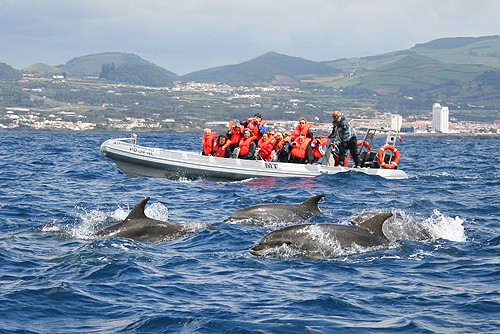 Vila Franca do Campo, Azores
Vila Franca do Campo, Azores
About midway between Boston and mainland Portugal sit the Azores, a collection of nine beautiful islands scattered over several hundred nautical miles. The closest point to Europe from the United States, the Azores is an autonomous region of Portugal, and just four hours by plane from Boston.
With their wild and green landscapes, the islands are the perfect spot for the adventurer. Water sports, yachtingdiving and whale watching are popular, the latter from Vila Franca do Campo, the largest town on the islands, which has prospered from the island’s orange and pineapple plantations. Equally popular is horseback riding, and cycling.
Whale-watching in the Azores is different than in the U.S. – often meaning a trip out to sea in a small semi-inflatable motorboat in search of the largest mammal on the planet. Perhaps that’s why the islands were named one of the top ten sites on the planet for finding the marine giants. Local whales include sperm whales, northern bottle nose, pilot, sowerby’s beaked whales, and occasionally orcas.
Guimarães
On 13 December 2001, UNESCO named the historic center of the City of Guimarães as a World Heritage. The carefully preserved city is one of the two 2012 European Capitals of Culture.
For Portuguese people, Guimarães has a special value, for it was in a field close to the walls of its castle that Afonso Henriques, the first King of Portugal, fought the Battle of São Mamede, on June 24,1128. By emerging victorious from this struggle against the army of Teresa, his mother and the daughter of Alfonso VI of León and Castile, Afonso Henriques began the process that would lead to the foundation of the kingdom of Portugal, of which he was to become the first king.
In addition to a medieval castle, built on the site of the first fort of the 10th century, the city also encompasses the Ducal Palace, now both a palace and a museum, originally built in the 15th century. In the center of the town is Rua de Santa Maria, a narrow medieval street, which is considered by art historians to be the most beautiful in the city.
in neverstoptraveling.com
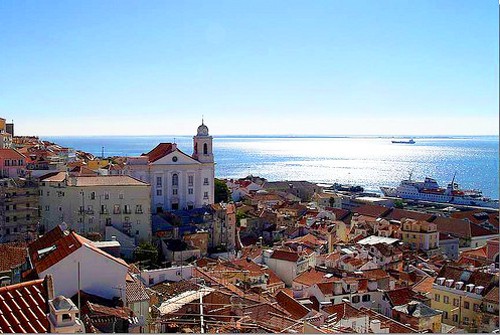
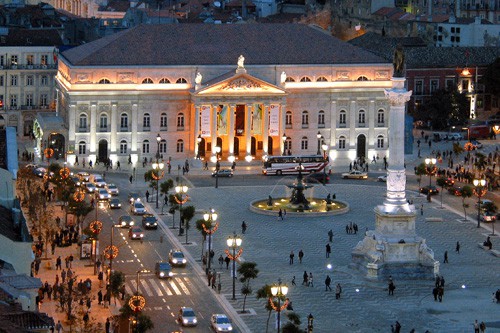
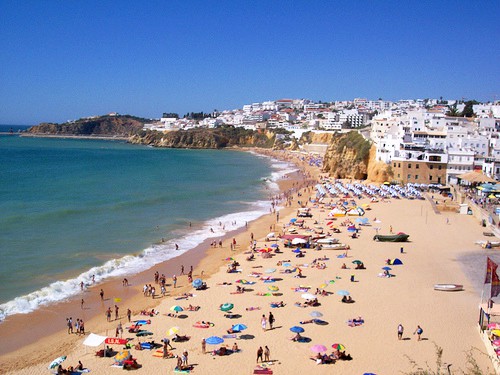



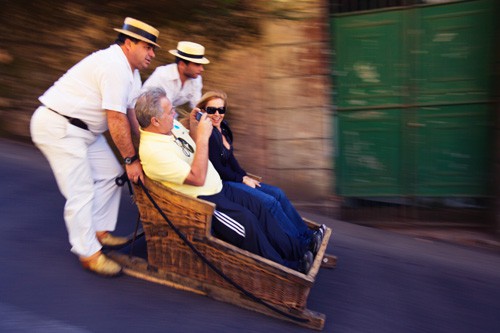

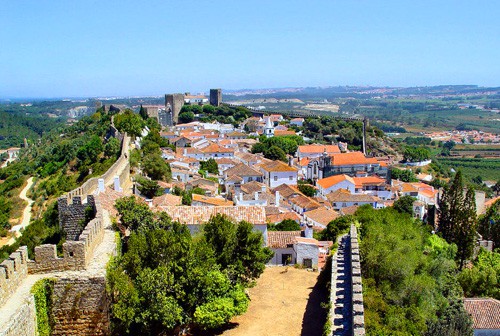
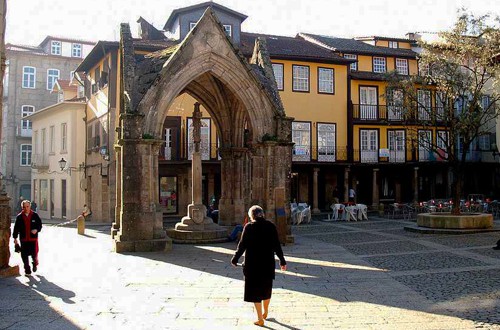
0 comments:
Post a Comment